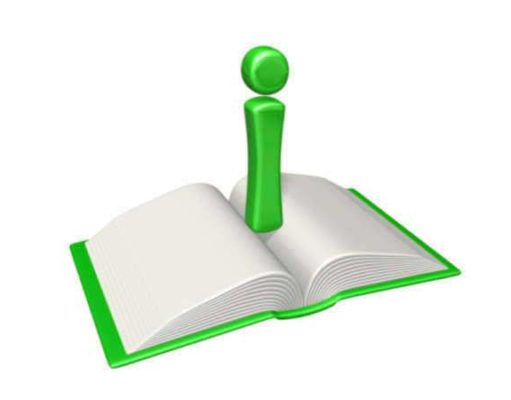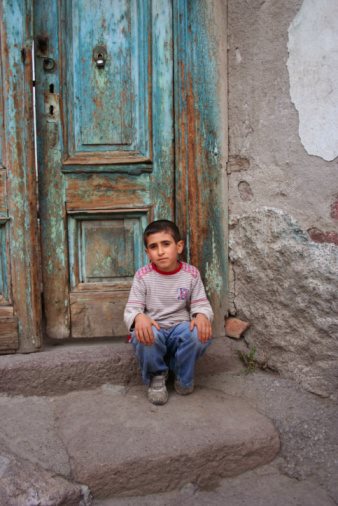Introduction
Natural disasters are a common occurrence in various parts of the world. These disasters can range from floods, hurricanes, tornados, earthquakes, volcanic eruptions, and wildfires, among others. The effect of such events is disastrous and can lead to loss of life and property damage. People affected by natural disasters often become homeless, lose their livelihoods, and become refugees. Natural disasters have profound effects on the survivors’ wellbeing and their long-term livelihoods, particularly children and vulnerable groups.
In 2020, over 200 natural disasters occurred globally, affecting over 120 million people. In America alone, severe storms, hurricanes, and flooding affected more than 14 million people and resulted in numerous casualties. Consequently, policymakers face a daunting task of accommodating natural disaster refugees. This article explores some of the recommended strategies for accommodating disaster refugees.
Temporary Housing
The primary concern for natural disaster refugees is shelter. Providing temporary housing is the most immediate solution. Temporary shelters should be built in safe areas, free from potential risks such as land movement, floods, and other hazards. The government should identify public and private buildings, including schools, libraries, and community centers, that can provide temporary housing. The shelters’ layout should follow social distancing protocols, and occupants should have access to sanitation facilities to reduce the risk of disease outbreaks.
Such measures have been implemented in various countries, including America. Following the devastation caused by Hurricane Katrina in 2005, the U.S. Federal Emergency Management Agency (FEMA) provided temporary housing for the affected population. Similarly, during Hurricane Harvey in 2017, FEMA coordinated temporary housing with state and local authorities to accommodate the affected populations.
Land Identification
After the disaster, people are often forced to move to new areas, as their previous settlement areas become inhabitable. The government must identify vacant land suitable for community resettlement and provide the necessary resources to support the relocation process. It is essential to ensure that the land is located in accessible and safe areas, where people can earn a livelihood.
During the 2010 earthquake in Haiti, the government identified vacant land suitable for resettlement. However, the process was flawed due to a lack of proper structures and financing. Consequently, the resettled population faced challenges in accessing water, sanitation, and energy.
Community-based planning
Community-based planning is crucial in natural disaster resettlement processes. The resettled population must have a say in the decision-making process, particularly in building structures and infrastructure. Community-based planning promotes community participation, which enhances sustainability and promotes the affected population’s welfare.
Community-based planning has been successfully implemented in various disaster-prone areas worldwide. For instance, following the 2007 floods in Bangladesh, the government of Bangladesh introduced community-based planning. The process involved consultation with affected communities and ensured that the affected population was at the center of decision-making.
Job Placement
Natural disasters often result in occupational disruption for the affected population. Ensuring that the affected population has employment is essential to their long-term welfare. The government should establish job-placement programs that provide job opportunities for refugees. Moreover, initiatives such as skills training in marketable skills can help refugees become self-sufficient.
During the Hurricane Katrina aftermath, the Department of Labor in America established work-placement programs for affected populations. The program enabled displaced individuals to acquire new skills or retrain in their existing field.
Healthcare
Natural disasters can lead to a high prevalence of diseases. The affected population is often susceptible to diseases such as cholera, typhoid, and malaria due to inadequate sanitation. The government should provide adequate healthcare facilities to promote the health of disaster refugees. Healthcare services such as check-ups, disease prevention campaigns, and vaccinations should be made available to the affected population.
The Covid-19 pandemic has highlighted the importance of healthcare in emergencies. Governments worldwide provided healthcare to populations affected by the Covid-19 pandemic. In America, the government established Covid-19 clinics to cater to populations affected by the virus.
Education
Natural disasters often result in the closure of schools, affecting the children’s education. The government should provide adequate funding to education programs to cater to the affected population. Moreover, authorities should establish alternative education programs such as online education and distance learning.
In Puerto Rico, following Hurricane Maria, the Department of Education established an online education program to cater to affected students. The program enabled students to continue with their education despite the disaster.
Conclusion
Natural disasters have severe socio-economic effects on the affected population, and policymakers should develop strategies to mitigate these effects. Temporary housing, land identification, community-based planning, job placement, healthcare, and education are some of the key strategies to accommodate natural disaster refugees. However, these strategies are not exhaustive, and policymakers should ensure that they cater to the affected population’s needs fully. Finally, investing in structural resilience can reduce the recurrence of such events, thus reducing the need for disaster resettlement processes.
Often times, with an earthquake or other natural disaster, the majority of the damage will be assumed to be with the initial force of the main event, as it was with the recent earthquake that devastated the city of Port-au-Prince and the surrounding areas in a matter of minutes, perhaps even seconds for some of the more structurally deficient buildings.
However, as was the case of the San Francisco earthquake of 1906 and even the Indian Ocean earthquake of 2005, the initial earthquake may have been the precipitating phenomenon for the destruction that ensued, but the bulk of the damage was incurred through collateral means and may even better recall the event to future generations. In terms of the latter, the whole chain of events was set in motion not by an earthquake above sea level (as the name “earthquake implies”) but the immense power of a 9.0-magnitude underwater earthquake that occurred on a fault off the coast of Indonesia in the Indian Ocean, which actually served to alter the rotation of the planet Earth as a whole.
This triggered a huge set of tsunami waves that was unable to be detected, owing to the unpredictability of earthquakes using current methods, the high population density of the impact zone and the fact a network to detect the tsunami waves was not viable given the poor economy of the region. All told, over 200,000 people died as a result of the quake-tsunami connection, and myriad others were forced to relocate as a result of the flooding.
As regards response to the refugees and lawful operations, the damage was so profound that even organizations who tend to more narrowly focus on political refugees, as people displaced by natural disasters are usually referred to by the term “displaced persons,” offered their services in relief efforts.
As for how to physically house the survivors of the tsunami, foreign governments and relief efforts alike phrased their relief efforts in terms of refugee status. The U.S. government radically altered its position on the acquisition of refugees and displaced persons, and Indonesia, Thailand and other countries saw the creation of refugee camps that provided aid and shelter for their nationals that worked in tandem with humanitarian organizations.
The Great Famine of Ireland was a stimulus for mass immigration to America in the 1850’s and 1860’s. The famine was in direct relation to the spread of potato blight across the potato crop in Ireland.
The effect on personal economies and human lives was exacerbated by an over dependence on the potato crop and the socioeconomic policies put in place. Ultimately, this dark period in Ireland’s history claimed over a million lives and put a tremendous dent in the indigenous Irish population. This loss of numbers in Ireland is further explained by strong emigration trends to the United States and elsewhere.
The effects of Irish refugee movement would also have enduring applications to today’s immigration law, as nativist reactions to these new settlers prompted reformers to establish quotas for immigrant groups and demanding minimum standards for literacy, effectively ending America’s “open door” policy on immigration.
While translations to the United States and immigration practices have yielded large numbers of legal and illegal Latin American immigrants to the country, it would be expected that asylum seekers, refugees and other displaced persons have contributed to the multicultural face of America in tangible ways.
In response to the Vargas Tragedy of 1999, then, Venezuelan nationals can be expected to make the pilgrimage to the “New World,” despite existing anti-American policies, Venezuelan President Hugo Chávez’s rejection of American aid, and the attempts of the Venezuelan government to keep its citizens in the country. The Vargas Tragedy was a result of unusually high amounts of rainfall in a region already plagued by a tendency to flood, eventually giving way to mudslides that destroyed roads, buildings and other structures, in essence wiping out whole towns and displacing the majority of the state of Vargas.
President Chávez’s solution plan was indeed multifaceted. Included in his stratagem were permanent relocation to the interior of the country, temporary refugee camps erected by federal and relief services and even a unique means of protecting refugees, an “adoption” program by where able Venezuelan families could take in internally displaced victims for a time. Perhaps unfortunately, this call to arms for Venezuelans also involved a rejection of American aid in the form of the Armed Forces before they could arrive, illustrating the influence of politics on attitudes toward refugees.
The Love Canal Disaster and “Man-Made” Natural Refugees
The Love Canal disaster was, in fact, not a natural disaster per sé, as there was neither a massive loss of life nor were the events beyond human control. Problems arose when the original plans for a residential community with expansive parks and working canal were scrapped due to lack of funding, leaving the door open for local chemical companies to dump their waste in the unused site. Eventually, though, the need for the land was apparent, and despite toxicity levels in the ground beneath the community, schools and other residential functions were allowed to be built.
This led to serious health complications in a number of residents, and upon full realization of the gravity of the issue, the Love Canal site was put in a state of emergency by the President, the first disaster of an environmental nature to earn that dubious honor. The Love Canal disaster serves as another example of refugee status, at least in practical terms, within one’s own country, and paved the way for international recognition of environmental dangers as a catalyst for refugee migration.
Responses to the San Francisco Earthquake of 1906 can be seen as reminiscent of the progressive spirit as it manifested in the United States and somewhat of a silver, or rather, golden lining for the city’s inhabitants. To be certain, San Francisco was hurt in the short term and long term in terms of material losses. Surely, the physical devastation of the city can not be ignored, as over two-thirds of the city succumbed to fires created in the wake of the initial 7.0-plus-magnitude earthquake along the San Andreas Fault.
Several thousands were killed by the quake and the fires, yet more were displaced by the carnage, and millions of dollars of damage was calculated to have been realized from the disaster. Moreover, as the city needed to be rebuilt, San Francisco was unable to continue to be a major factor in commerce on the West Coast for some time, redirecting business to Los Angeles and ensuring that the latter would be the premier destination in California. Still, for those who did not flee to nearby cities, there were hope and a new legacy to be found.
The U.S. government cared for its in-state refugees with the Army’s erection of makeshift (but structurally sound) refugee housing during the rebuilding process, evoking images of progressive reform to come. Furthermore, to San Francisco’s benefit, the rebuilding process allowed for a revival away from the corrupt influences of the local powers-that-be beforehand, and led to the formation of a new identity for the city as a place of cultural significance.
The tendency of most to regard natural disaster is to approach it by thinking only in terms of those dramatic events that occur within a moment’s notice and are obvious attention-grabbers and financial drains. Even so, some disasters, such as famine, take time to develop but may be just as deadly or affect just as many people. Such is the case with climate change and other environmental trends that lend themselves to be producers of large numbers of displaced persons. The Office of the United Nations High Commissioner for Refugees, or UNHCR.


















